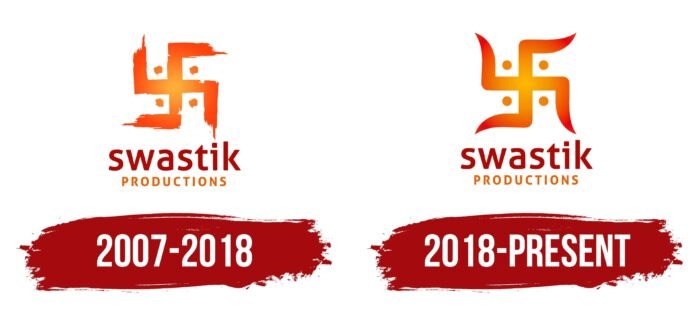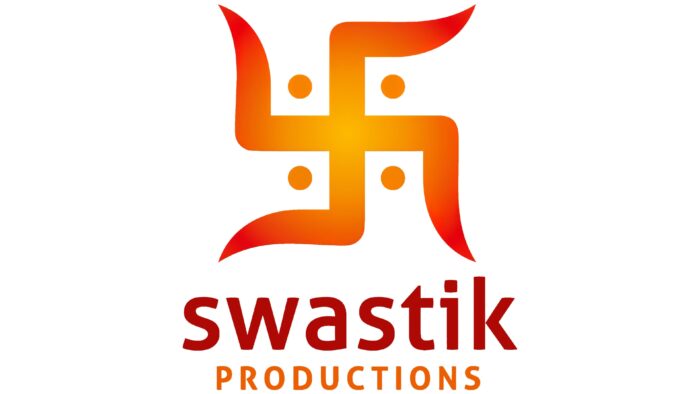A beautiful dance can be seen on the emblem of the film company. Energy and flame, born in the movement of the dancers’ hands, charge the user and attract attention. The Swastik logo is marked with a bindi and is a conduit for Indian culture.
Swastik: Brand overview
| Founded: | 2007 |
| Founder: | Siddharth Kumar Tewary |
| Headquarters: | Mumbai, India |
| Website: | swastikproductions.com |
Meaning and History
The founder of the production company understood that to become successful in the field of cinema; you need to attract attention to yourself constantly. It is clear that this can be done only by their work. But this is later, and in the early years, a chip is needed that will cause the effect of “wow!” in potential viewers. And he found such a mechanism – a name underlined by a shocking logo because it is associated with Nazi Germany.
The whole paradox of identity is that you expect one thing from such symbols (swastika), but you get something else – entertainment. After all, Siddharth Kumar Tewary turned the world upside down, turned everything upside down. His company is a separate universe where the law of template and cliché does not apply since many still associate the swastika with Nazism. The center shows an eventful life, full of unexpected twists and turns, as in the series that it produces.
In the short time of existence of the Indian film studio, it has two logos. But these are not different signs, but the same, corrected in accordance with the requirements of the genre. It is bright, cheerful, extraordinary, going beyond the serious and boring. Indeed, according to ancient Indian beliefs, such a symbol denotes the sun and its annual turnover.
2007 – 2018
The first logo consists of a bright swastika, which echoes the company’s name. The lines that form it are medium in thickness and not wide, as in the Nazi symbol. And they have a different color palette. In the Indian version, it is life-affirming and joyful, even sunny.
The sun is located in the middle of the connecting strokes – this is where the maximum concentration of warm yellow tint. Then it diverges, forming a zone of light. At the ends of the stripes, uneven strokes are visible – torn and not the same in height. The effect of aging is also present on the edges – there are also careless punctures scuffs chipped. Four points concentrated near the center are also uneven.
The text part of the logo contains the full name of the company, ungrouped into two lines. The top row features the word “Swastik” in a sleek sans-serif lowercase font. At the bottom is the inscription “Production,” made in capital letters. The background of all elements is a barely noticeable light gray rectangle.
2018 – today
To finally cross out the association with Nazism and fascism, the designers used the Jain swastika. It is associated with Jainism, an Indian religion about self-improvement of the soul to achieve eternal bliss and omniscience. This is a direct link to nirvana. The emblem features a badge with tapered and slightly wavy ends. They resemble flames because they have the appropriate color – a gradient transition from yellow to red.
The style of the inscription remained the same: smooth, even, chopped, with a beveled top at the “t,” which looks like the number “1”. Instead of a dot, the letter “i” has a convex square that resembles a TV screen. And “k” consists of two halves: a pillar and an index arrow. “a” is missing a tail, so its right side is slightly raised.
Swastik: Interesting Facts
- Beginning and Purpose: Siddharth Kumar Tewary started Swastik Productions in 2007 to make shows that entertain, educate, and inspire. Known as the ‘mythology king,’ Tewary’s creative vision has been key to the studio’s success.
- Leading in Mythology and History: The studio is famous for its mythological and historical shows, like the acclaimed “Mahabharat” from 2013-2014. This show, known for its quality production and storytelling, won awards and set new standards for TV shows in India.
- Trying Different Genres: Besides mythology and history, Swastik Productions produces contemporary dramas and fantasy shows that appeal to a broad audience.
- Advanced Visual Effects: The studio is a leader in using advanced visual effects in India. These effects add depth and realism to ancient stories and characters, raising the bar for TV production in the country.
- Worldwide Success: Swastik’s shows, such as “Mahabharat,” have reached global audiences, being dubbed and shown in various languages in Asia, the Middle East, and Africa.
- Cultural Influence: By focusing on mythological and historical stories, Swastik Productions has sparked discussions about India’s heritage, values, and traditions, making a significant cultural impact.
- Developing Talent: The studio is known for discovering and nurturing actors and staff and promoting a creative and innovative work environment.
- Teaching Through TV: Its shows have an educational side, making stories from Indian mythology and history accessible and relevant, especially to younger viewers.
- Tewary’s Leadership: Siddharth Kumar Tewary, as the creative Force, ensures that each show tells a compelling story and connects deeply with viewers.
- Growth and Looking Ahead: Swastik Productions continues to grow, and they plan to move into digital content and explore new ways of storytelling. Its commitment to quality and innovation promises exciting future projects.
Swastik Productions remains a key player in Indian entertainment, celebrated for its culturally rich and visually stunning shows that captivate audiences both in India and around the world.
Font and Colors
As a sign of personal identity, the production company chose a swastika – a cross with stripes of the same length forming right angles. She is the personification of the sun – its annual rotation, a synonym for Kolovrat. According to Hindu beliefs, the right-handed swastika is associated with the main celestial body and denotes a cosmic wheel with a fixed center around which life revolves. And the word “swasti” is translated from Sanskrit as “prosperity, a wish for good luck.” Such a symbol promises good and good, denoting four branches: knowledge, perception, happiness, and energy. The dots on it also represent the sun.
Swastik chose a simple typeface for its logo, grotesque and sleek. To turn it into an individual font, the developers changed the outlines of some letters, removing the standard elements. The logo’s color palette is related to the theme of the sun and light. It has all the shades of fire: crimson, scarlet, orange, yellow, golden.
Swastik color codes
| Persimmon | Hex color: | #e95903 |
|---|---|---|
| RGB: | 233 89 3 | |
| CMYK: | 0 62 99 9 | |
| Pantone: | PMS 1655 C |
| Turkey Red | Hex color: | #ae0905 |
|---|---|---|
| RGB: | 174 9 5 | |
| CMYK: | 0 95 97 32 | |
| Pantone: | PMS 485 C |








